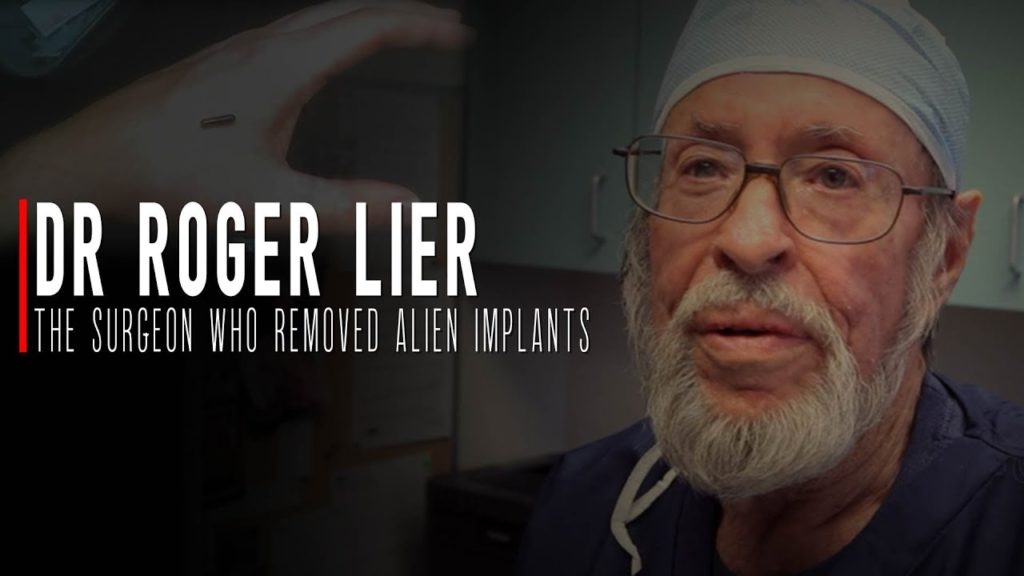Roger Krevin Leir (March 20, 1935 – March 14, 2014) was an American podiatric surgeon who later became a prominent ufologist. Born in San Francisco, California, Leir is best known for his investigations into alleged alien implants. He authored books such as “The Aliens and the Scalpel” and made appearances on various radio and television programs, including “Coast to Coast AM.”
Throughout his career, Leir claimed to have discovered evidence of “non-terrestrial experimentation on man.” His research primarily focused on extracting and analyzing purported alien implants from individuals who believed they had been abducted by extraterrestrials. Despite his intriguing findings, Leir’s work has been met with both fascination and skepticism within the ufology and broader scientific communities.

Early Life and Education
Roger Krevin Leir was born on March 20, 1935, in the San Francisco Bay area. He relocated to southern California when he was 13 years old. Leir often described his childhood imagination as “wild and vivid,” frequently daydreaming about flying.
For his higher education, Leir attended the University of Southern California. He graduated with a bachelor’s degree in Science in 1961. By 1964, he had qualified as a podiatrist, marking the beginning of his professional career in podiatric surgery.
It’s worth noting that while Leir’s early life and education were rooted in the medical field, his interests eventually expanded to include ufology, leading him to become a significant figure in the study of alleged alien abductions and implants.
Career
- Podiatric Surgeon: Roger Leir began his professional life as a podiatric surgeon. He practiced in Ventura County, California, for several decades. His medical background provided him with the skills and expertise that would later be instrumental in his investigations into alleged alien implants.
- Ufology and Alien Implants: Leir’s career took a unique turn when he became deeply involved in the world of ufology. He is best known for his surgical removal and study of what some believe to be alien implants from the bodies of alleged alien abductees. Over the years, Leir claimed to have removed and studied various foreign objects from patients, asserting that these objects might be evidence of extraterrestrial contact.
- Authorship: Leir documented his findings and theories in several books. One of his most notable works is “The Aliens and the Scalpel,” where he detailed his surgical procedures and the subsequent analysis of the extracted objects. He also authored other books, further exploring the alien abduction phenomenon and the evidence he believed he had uncovered.
- Media Appearances: Leir’s work in ufology garnered significant attention, leading to appearances on various radio and television programs. He was a frequent guest on the popular radio show “Coast to Coast AM” and participated in numerous documentaries and television specials on UFOs and alien abductions.
- Skepticism and Controversy: While Leir’s work fascinated many within the ufology community, it also attracted skepticism. Critics questioned his methodologies, the nature of the objects he extracted, and the conclusions he drew from his findings. Despite the controversies, Leir remained steadfast in his belief that he had discovered tangible evidence of extraterrestrial contact.
Controversy
Roger Leir’s work in the realm of ufology, particularly his surgical removal and study of alleged alien implants, has been a source of significant controversy. While many within the ufology community lauded his efforts, skeptics raised several concerns:
- Methodology: Critics questioned Leir’s scientific methodologies, particularly the manner in which he conducted his surgeries and subsequent analyses of the extracted objects.
- Nature of the Implants: The objects Leir identified as potential alien implants were often dismissed by skeptics as common earthly materials, such as shards of glass or metal fragments, which could have entered the body through everyday accidents.
- Lack of Peer Review: Leir’s findings were often presented to the public without undergoing rigorous peer review, a standard process in scientific research. This led to doubts about the validity and authenticity of his claims.
- Conclusions: Some critics argued that Leir was quick to attribute extraterrestrial origins to the objects he extracted, without considering more mundane explanations.
Impact on Ufology
Roger Leir’s contributions to ufology have been both groundbreaking and contentious, leaving an indelible mark on the field. As a podiatric surgeon, Leir brought a unique perspective to the study of alleged alien abductions, merging medical expertise with a passion for the unexplained.
Perhaps his most significant contribution was his surgical removal and analysis of purported alien implants. These procedures, documented in his book “The Aliens and the Scalpel,” provided tangible evidence for many who believed in extraterrestrial encounters. Leir’s assertion that these implants might be devices or trackers placed by aliens in abductees added a new dimension to the abduction narrative. His work suggested that there might be physical proof of such encounters, beyond just anecdotal accounts.
Leir’s media appearances, particularly on platforms like “Coast to Coast AM,” amplified his findings, bringing them to a broader audience. His willingness to present and defend his work in public forums showcased his commitment to his research.
However, with visibility came scrutiny. While many in the ufology community embraced Leir’s findings, skeptics challenged his methodologies and conclusions. The debates surrounding his work highlighted the broader tensions in ufology between belief and skepticism.
FAQ
Conclusion
Roger Leir, originally a podiatric surgeon, ventured into the enigmatic realm of ufology, leaving a lasting imprint with his unique blend of medical expertise and passion for the unexplained. He is best remembered for his pioneering work on the surgical removal and analysis of purported alien implants, offering what many believed to be tangible evidence of extraterrestrial encounters. While his findings fascinated a significant portion of the ufology community, they also ignited debates and skepticism, making him a polarizing figure in the field. Regardless of the controversies, Leir’s dedication to exploring the boundaries of known science and the mysteries of the universe showcased his unwavering curiosity. His legacy in ufology stands as a testament to the continuous human quest to understand the unknown.
